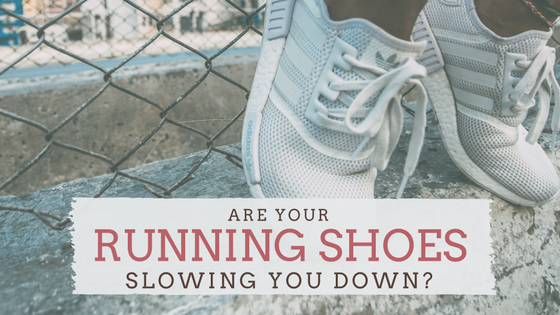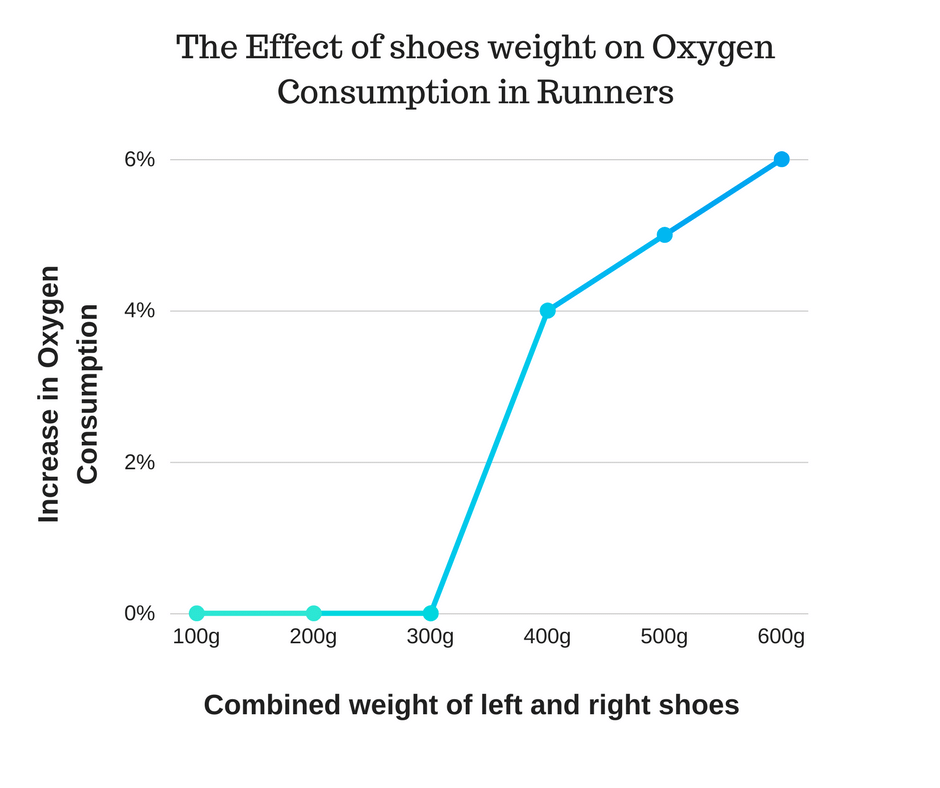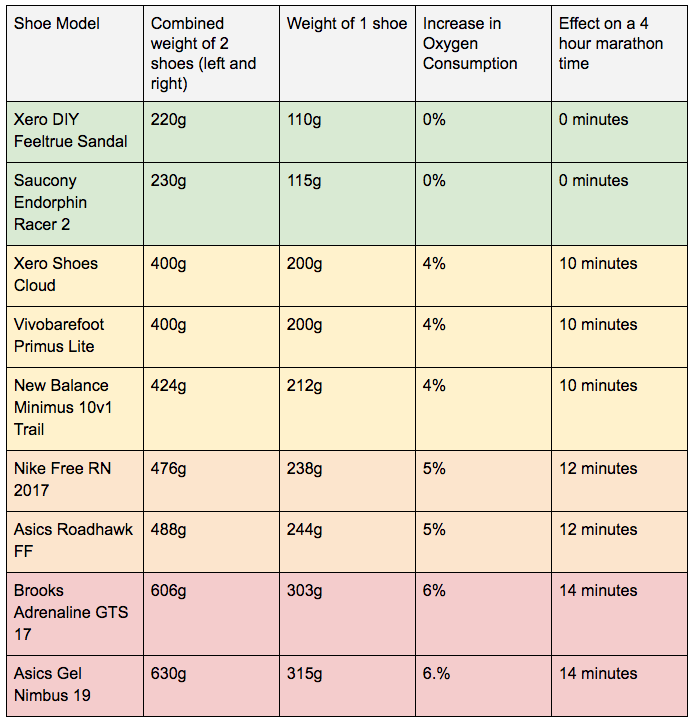
Did you know that the weight of your running shoes may actually have a significant impact on your running performance?
Imagine trying to run while carrying a backpack with heavy textbook in it. It’s going to be hard, right? Now, add another textbook. It’s going to be a bit harder. Add another and it will be harder still. When you add some weight, in this case a textbook, you get an incremental increase in your effort.
So, when you run while carrying more weight it takes more effort. In theory then, slightly heavier shoes would cause you to run with slightly increased effort. The question then becomes, are the small differences in the weight of running shoes going to make any difference to your effort during running?
Intuitively, you may be thinking that it will be too small a difference to make any significant impact. However, in 2014 a group of researchers attempted to answer this question and their findings may surprise you.
The Effect of Footwear on Running Performance and Running Economy in Distance Runners
In 2014, Fuller and colleagues conducted a systematic review and meta analysis on the effect of footwear on running performance. That means they collected all of the studies that had been done on that topic and reviewed them. Then they pooled the data (meta analysis) to see if they could draw some firm conclusions (Fuller 2014).
They looked at many variables including the stiffness, cushioning and comfort but the most interesting results came from the information they gathered on the weight of the shoes. They looked at the combined weight of the shoes (i.e. the total weight of the left and right shoe) and found that their was a linear relationship between the weight of the shoes and oxygen consumption.
Oxygen Consumption and Running Economy
Oxygen consumption is the amount of oxygen used by the body each minute during a task, in this case running. Oxygen consumption during running is a proxy measurement for Running Economy. This refers to how fuel efficient you are as a runner and it’s very similar to fuel efficiency in a car. Basically, a more fuel efficient car can go further or faster on a given amount of fuel than a less fuel efficient car. Similarly, a runner with a higher degree of running economy can go further or faster on a given amount of fuel.
As runners, we want a high level of running economy. Researchers can use the rate of oxygen consumption (fuel use) to measure our running economy. More oxygen consumption = less running economy = bad.
Heavier Shoes Increase Oxygen Consumption
Once the studies had been reviewed and the data pooled, Fuller and his friends found that for every 100g increase in combined shoe’s weight the oxygen consumption increased by 1%. It’s just like in my example at the beginning with the textbooks, add a bit more weight and the effort level goes up. This only seemed to happen for shoes with a combined weight of over 400g. If the shoes weighed less than 400g there was no increase in oxygen consumption.
What is really interesting about this finding is just how much the effort level goes up. For every 100g the rate of oxygen consumption went up 1% once the threshold weight of 400g has been reached. So a 400g pair of shoes increases oxygen consumption 4%, a 500g pair increases oxygen consumption 5% and a 600g pair increases oxygen consumption 6%.

Now, I realise this means nothing to you so let’s try and put that into context. 4% of a 4 hour marathon is 10 minutes. 5% of a 4 hour marathon is 12 minutes. 6% of a four hour marathon is 14 minutes!

That means heavier shoes could be costing you as much as 14 minutes on your marathon time if you are a 4 hour marathoner! If you like half marathons, it’s 7 minutes!
I was very surprised by these results. I really didn’t think what seem like trivial increases in weight 100-200g could make so much difference.
Popular Running Shoes by Weight
To help you make some practical use of this information, here are some popular running shoes organized by weight.

Choosing your Running Shoes based on Weight
Now, I’m not saying go and change your running shoes for a super light pair immediately. Lighter running shoes are usually more minimal and if you change quickly you will definitely get injured. If you are planning to change, I’d recommend reading my blog How to Transition to Minimalist Running Shoes Without Getting Injured first.
That being said, over the next few years, when you need to replace your running shoes anyway, why not opt for a lighter pair and ease into them gradually? If you’re interested in that approach, here’s a table to help you when selecting your running shoes. The ‘Weight of 1 shoe’ column is the one to look at as most shoe companies give you the weight of 1 shoe when you look at the product description.

So how much do your shoes weigh? Are you thinking about moving to a lighter shoe? Let us know in the comments.